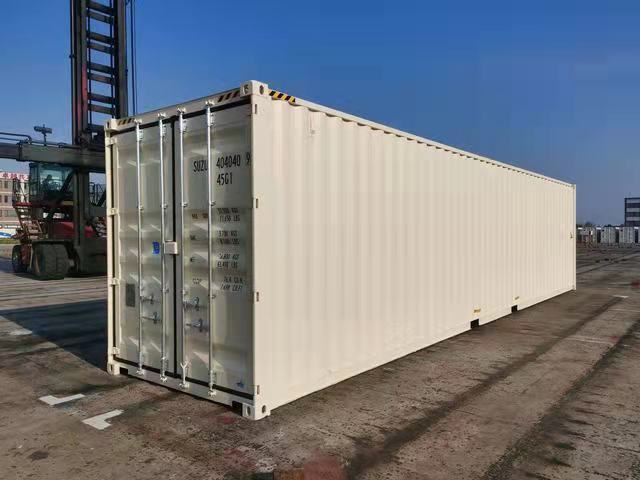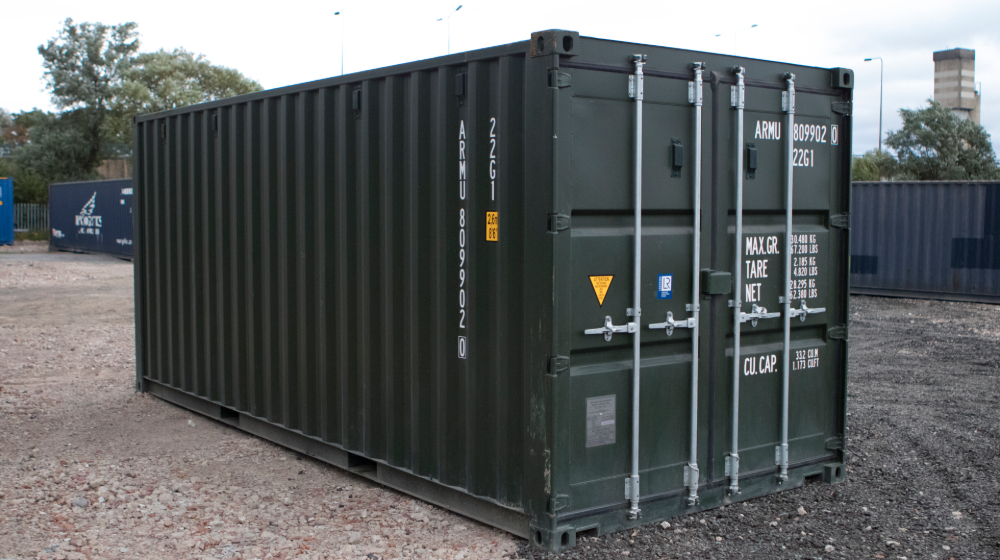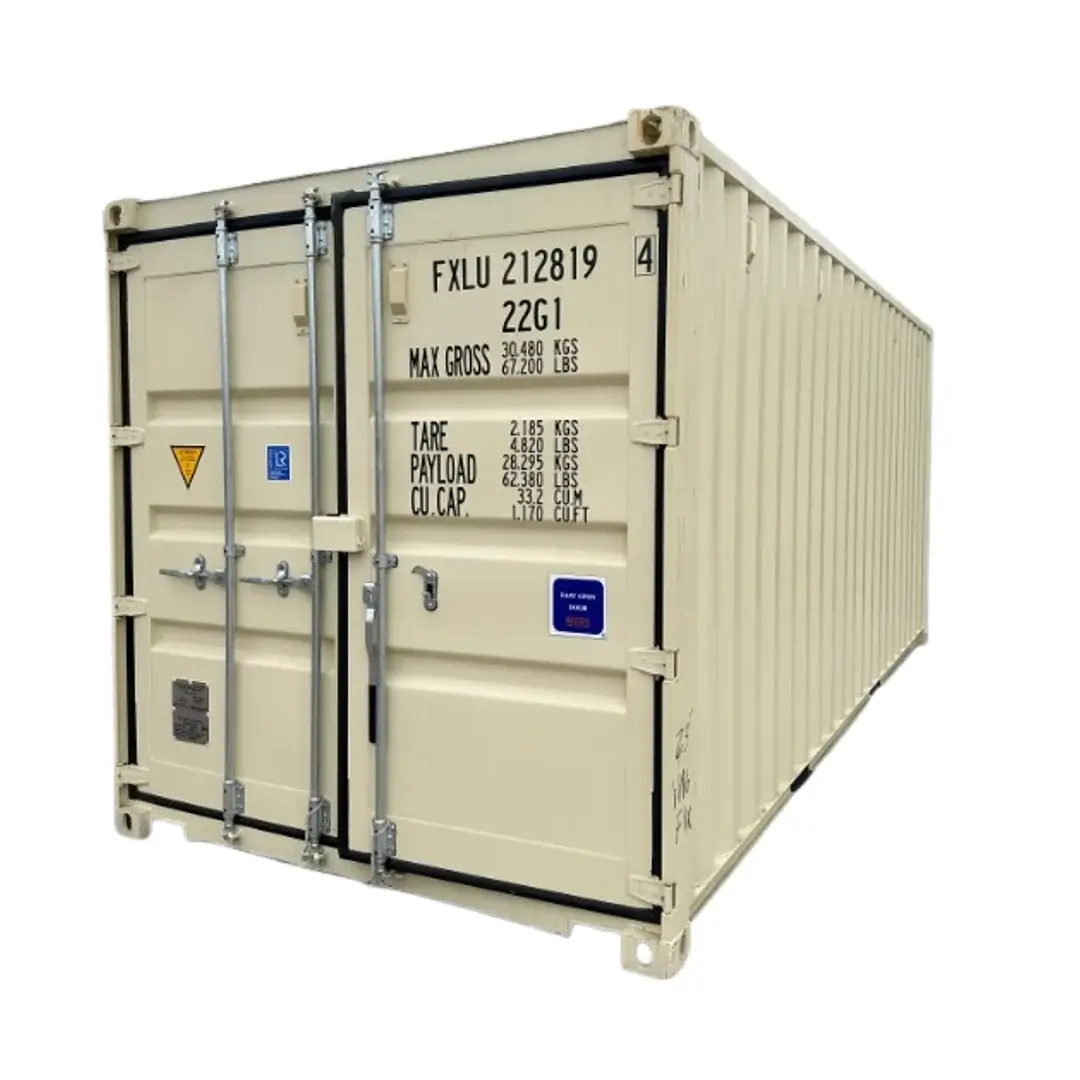The Ultimate Guide to Choosing the Right Delivery Container for Your Needs
When it involves choosing the ideal shipping container, comprehending your details needs is essential. You'll want to take into consideration factors like size, kind, and material to guarantee you make the ideal choice. From common dimensions to specialized options, there's a great deal to discover. Plus, budgeting for both the container and any type of alterations can make a big difference. Allow's damage down the vital facets to aid you locate the perfect fit for your needs.
Comprehending Delivery Container Sizes
When you're selecting a shipping container, comprehending the different dimensions offered is important for making the ideal choice. Shipping containers generally can be found in common lengths of 20 and 40 feet, however you'll likewise find other measurements. Understanding the dimension you require relies on what you intend to shop or transport.If you're relocating smaller sized things, a 20-foot container may be perfect, while bigger deliveries frequently require a 40-foot container. The height can also differ; high dice containers use extra vertical room, which can be valuable for taller goods.Before making a decision, determine your cargo, and take into consideration just how much area you'll require for filling and discharging. Always variable in prospective future needs-- selecting a somewhat larger container may conserve you headache down the line. Eventually, choosing the appropriate size will improve efficiency and ensure your products are secure throughout transit
Sorts Of Shipping Containers Available
There are numerous sorts of delivery containers offered, each designed for certain purposes and freight needs. The typical dry container is functional, ideal for basic cargo. If you're delivering disposable items, think about a chilled container, which preserves a regulated temperature. For oversized products, high dice containers provide added height, fitting taller loads.If you require to carry hefty machinery or devices, level rack containers supply a sturdy base without walls. At the same time, open-top containers enable simple loading of high cargo, with a removable tarpaulin covering for defense. If you're trying to find flexibility, think about a retractable container that can be conveniently stored when not in use.Lastly, specialized containers like tank containers are utilized for fluids, while vented containers are made for bulk cargo that needs ventilation. Understanding your freight kind will assist you select the appropriate container to fulfill your shipping needs successfully.
Product Considerations for Resilience
When choosing a delivery container, the material plays a vital function in its toughness. You'll intend to consider the advantages of steel versus light weight aluminum, especially regarding corrosion resistance. Understanding these elements can help you make a more informed choice for your shipping needs.
Steel vs. Aluminum Containers
How do you choose in between steel and light weight aluminum containers for your delivery needs? Begin by thinking about sturdiness. Steel containers are robust and offer superb toughness, making them excellent for hefty tons and severe conditions. They resist damages from effects and are commonly less expensive, which can be a significant variable for budget-conscious buyers.On the other hand, aluminum containers are lightweight, which can conserve you on delivery expenses. They're simpler to maneuver and are a terrific choice if you require to deliver products frequently. Nonetheless, light weight aluminum is normally more pricey and much less robust than steel. Weigh your details requirements thoroughly, consisting of weight, expense, and the type of freight you'll be shipping, to make the ideal choice for your scenario.
Corrosion Resistance Variables
Selecting the appropriate product doesn't just entail weight and price; deterioration resistance plays a significant function in longevity. When selecting a shipping container, take into consideration the environment it'll encounter. Steel containers, while solid, can corrosion if not properly treated. Seek choices with safety coverings or galvanization to improve their life expectancy. Aluminum, on the various other hand, uses natural deterioration resistance, making it excellent for seaside areas or moist problems. Nevertheless, it can be more pricey. In addition, examine the container's usage-- if it'll be revealed to chemicals or severe weather, focus on materials that can withstand these problems. Investing in a corrosion-resistant container currently can save you from pricey repair services or replacements down the line. Pick carefully for lasting benefits.
Modifications and Modification Options
Delivering containers aren't just for delivering items; they can be transformed to fulfill your particular demands via various alterations and personalization choices. You can convert a conventional container into a cozy workplace room, a momentary retail shop, or even an individual fitness center. The possibilities are almost endless.Think concerning including home windows, insulation, or ventilation to enhance comfort. You may additionally consider electric wiring, plumbing, or even personalized shelving to enhance functionality. If protection's a worry, strengthened locks can provide peace of mind.For visual allure, you can repaint the container or add a distinct style to make it stick out. Don't forget flooring options-- whether you want durable plywood or something more sophisticated, it can raise the space.Ultimately, tailoring your delivery container to fit your needs can improve usability and create an unique setting that reflects your design.
Evaluating Your Transport Requirements
When it involves utilizing your changed delivery container, understanding your transport needs is vital. Begin by establishing what you'll be shipping-- whether it's hefty equipment, retail goods, or personal things. Each sort of freight has different requirements relating to dimension, weight, and accessibility.Next, take into consideration the distance and mode of transportation. Are you link shipping locally, nationally, or internationally? This impacts the container's design and functionality. If you're utilizing trucks, ensure your container fits typical measurements for very easy loading and unloading.Additionally, consider transit conditions. Will your things require special security from weather condition or temperature level fluctuations? If so, you might need insulation or ventilation functions in your container.Lastly, examine how commonly you'll be transferring items. Regular shipments may call for a more sturdy and functional container to fulfill continuous needs. By resolving these aspects, you'll be well-prepared to choose the appropriate shipping container for your needs.
Budgeting for Your Delivery Container
Setting a spending plan for your shipping container is necessary for ensuring a smooth investing in process. First, establish exactly how much you can manage to invest. Rates can differ considerably based on size, problem, and type. New containers commonly set you back extra, but made use of ones can offer substantial savings.Next, consider any type of extra prices you might sustain, such as transportation fees, shipment costs, and adjustments. If you prepare to customize the container, consider those costs as well. Research different distributors to contrast costs and discover the very best bargain that satisfies your needs.Don' t neglect to include any type of permits or regulations that might apply to your acquisition and use the container. By clearly describing your budget plan, you'll be better prepared to make educated decisions, guaranteeing you get the best container without damaging the bank.
Upkeep and Take Care Of Durability
To ensure your delivery container lasts for several years, regular maintenance is crucial. Beginning by checking the exterior for corrosion, dents, and damage. If you identify any type of problems, resolve them quickly to protect against more wear and tear. Tidy the container regularly, both throughout, to eliminate dirt, debris, and wetness that can cause corrosion.Ensure the doors seal correctly and lubricate the joints original site to avoid rust and sticking. If you're making use of the container for storage, take into consideration including ventilation to minimize humidity and mold and mildew development. For added protection, use a rust-inhibiting paint or sealant annually.If your container's located in a rough setting, like coastal locations, you might need to boost upkeep frequency. Watch on the flooring, as well; any kind of indications of wear must be repaired today. With these simple steps, you'll prolong the life of your shipping container significantly.
Regularly Asked Concerns
How Do I Discover a Reputable Shipping Container Distributor?
To find a reliable delivery container provider, begin by looking into on the internet reviews, asking for referrals from pals or sector get in touches with, and comparing costs. Always check their qualifications and assurance they provide high quality containers that meet your needs.

Can I Lease a Delivery Container Instead of Purchasing?
Yes, you can most definitely rent a shipping container as opposed to buying pop over to these guys one. Lots of providers use rental options, which can conserve you money and offer versatility if you just require it for a short duration.
What Allows Are Needed for Container Placement?

Are Delivery Containers Weatherproof and Appropriate for Outdoor Storage?
Yes, shipping containers are generally weatherproof, made to stand up to rough problems. Their robust construction maintains your products protected and completely dry, making them ideal for outdoor storage. Just assure proper ventilation to stop dampness build-up inside.
How Do I Transfer a Shipping Container As Soon As Acquired?

Comments on “10 Reasons to Buy New Shipping Container 40 x 8 x 9.6 for Modern Urban Living”